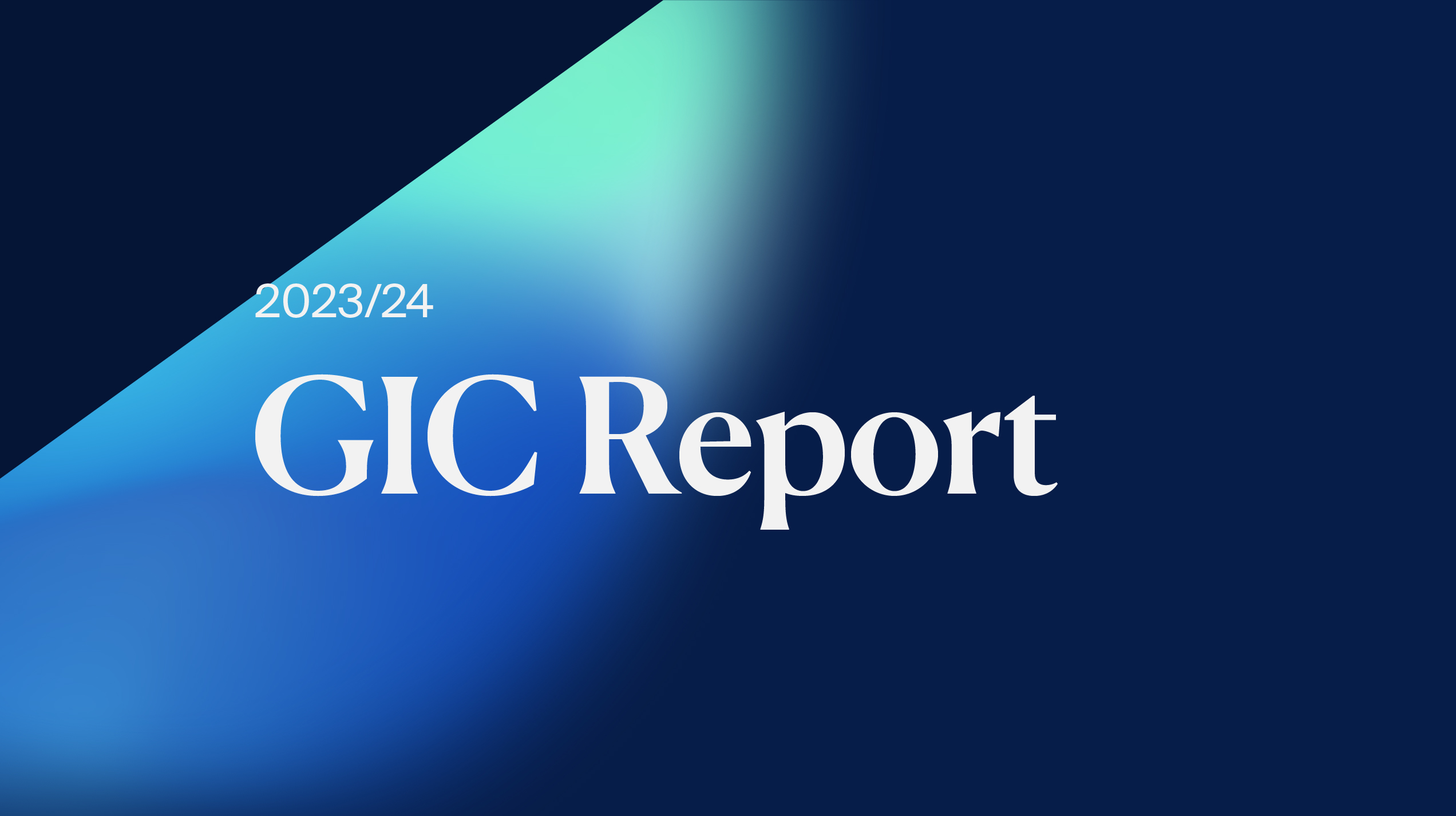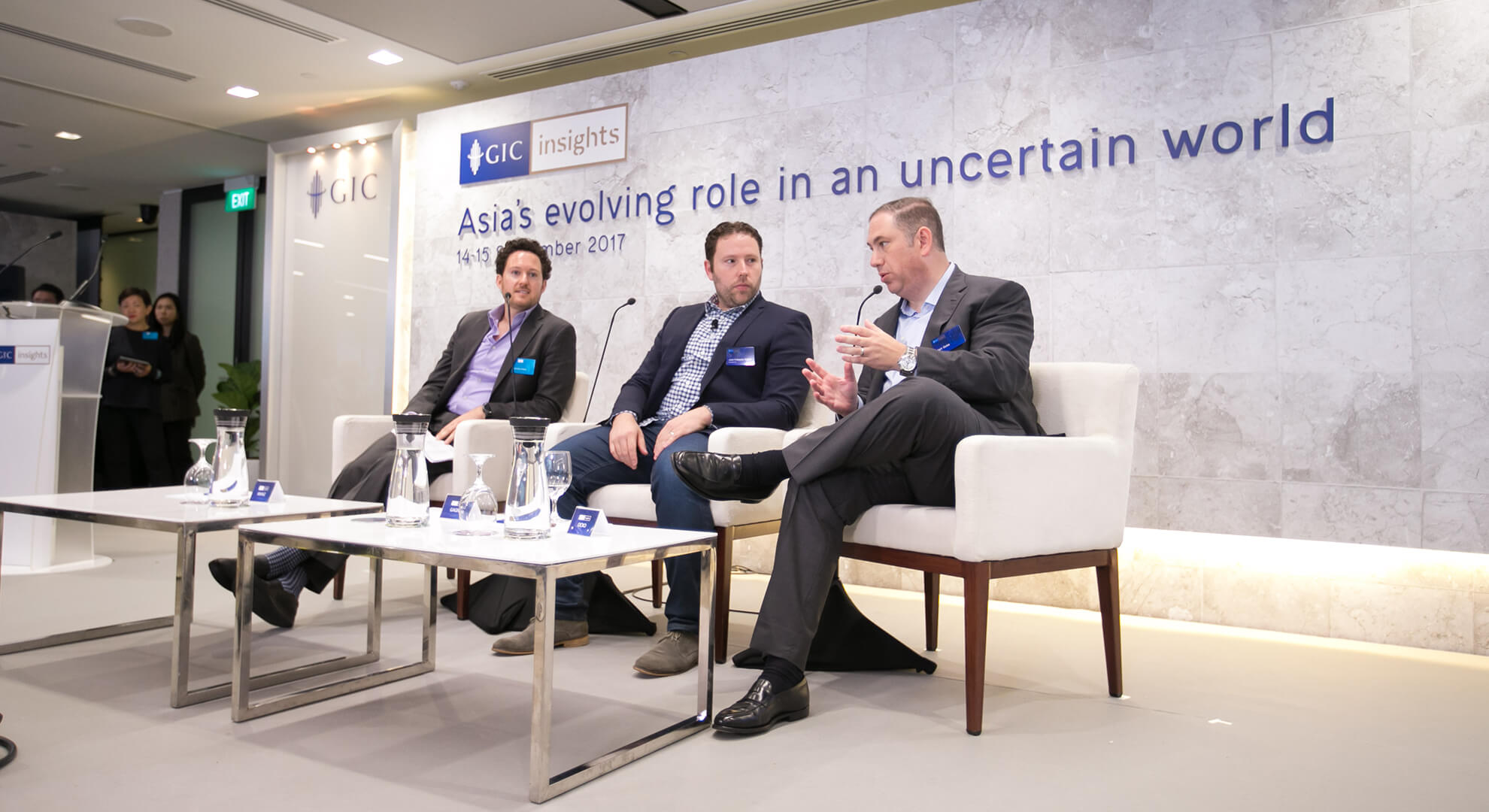This article presents takeaways from a panel at GIC Insights 2017 with Matt Ocko, Managing Partner of DCVC, and Jean- François Gagné, CEO of Element AI, moderated by Jeremy Kranz, Co-Head of GIC’s Technology Investment Group. GIC Insights is our annual flagship event that gathers a select group of prominent business leaders to deliberate over long-term issues pertinent to the international business and investment community.
How is Artificial Intelligence (AI) changing the landscape?
AI is changing a wide range of industries, including industrials, agriculture, finance and more. It delivers insights beyond human experts, and transforms organisations by optimising execution and learning in real-time. AI can also help produce solutions at a lower cost, outperforming traditional companies.
Zymergen for example, produced a fully functional replacement for mosquito repellent using an automated lab. This was done at a fraction of what the most established companies such as DowDuPont would spend to develop new chemicals.
Adopting AI, especially early on, can help companies outperform among their peers. However, to adopt AI requires a fundamental rethink of a company’s mindset, approach and capability.
How is AI changing traditional companies?
AI mimics human reasoning and copies moves to optimise its end-state. Existing systems are first programmed by humans, working on a minimal subset of rules. As the last barriers that prevent AI from understanding our world disappear, AI gains capabilities once limited to humans. From there, it is able to address increasingly complex and previously unsolvable problems.
These capabilities have disrupted many industries. In fact, some older companies who were once viewed as disrupters themselves, are now being outperformed by these newer competitors. For instance, Embark, a company started by college dropouts, developed a system of autonomous trucks at less than USD$10 million, ahead of Google and Tesla.
How should companies respond?
There are many ways companies can utilise AI to manage risk, optimise functions, and stay ahead of competitors. For instance, Prime Intelligence uses AI to distill information from petabytes of documents – replacing the role of analysts and consultants. Juniper Intelligence, on the other hand, uses AI to predict climate up to 50 years in advance. This provides a more accurate risk assessment than some traditional insurance companies.
Large organisations should utilise AI to their advantage as well. These companies can leverage their existing positions and assets, while using AI to reinvent their business models. This could mean using third-party global AI bespoke enterprise solutions providers to help build the necessary technology systems and datasets for them, instead of undertaking their own AI set-up.
How to capitalise on AI’s full potential
There are a few points of focus for companies looking to utilise AI fully. First, companies must transit from a command-and-control role to one that teaches AI systems. This will involve improving and iterating algorithms to ensure the whole system creates values. The process includes generating a hypothesis, looking for insights, and testing with simulations. Though AI is a formidable capability, it requires human guidance and constant upkeep. By providing this, companies can use AI to generate novel solutions to current business problems.
Second, AI cannot be “wrapped” around existing data and systems. Current data is usually based on past operations and biases. Instead, companies need to build new datasets for use with AI. It must be properly integrated into the company’s strategy, with the company transforming into a digital business.
Third, companies need to look beyond their existing corporate partners and tap into new talent. Many of these talents will be in Silicon Valley, but there are hubs linked to innovative companies in other regions like Montreal, Toronto, London, Beijing, Tokyo and Singapore.







